Life Without
Electricity
Vocabulary
Read the vocabulary terms to understand the reading better.
Coal
Coal is a black or dark brown substance produced underground from long dead plants; coal can be burned as fuel or burned to produce electricity.
Fuel
Fuel is a material such as wood, coal, gas, or oil that is burned to produce heat or power.
Icebox
An icebox is an insulated box or cabinet with a separate space for ice that was used to keep food cool.
Kerosene
Kerosene is a thin oil that was burned in lamps to provide light, and burned as fuel for heating and cooking.
Washboard
A washboard is a wooden frame that held a wavy surface that was used to wash clothing; a washboard was put into a tub of soapy water and the clothes were rubbed across the wavy surface until they were clean.
If you could travel back in time, you would find that life was very different.
Cooking
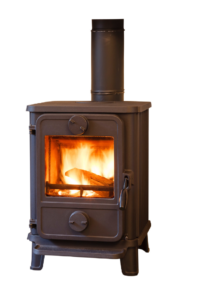
The stove was heated by burning wood or coal. A lot of time was spent chopping wood to burn. The burnt wood or coal left ash behind. All that ash had to be cleaned out of the stove regularly.
Refrigeration
To keep food from spoiling, it was kept in an ice box. There were two doors on the ice box. The top door opened to a small compartment where a big block of ice was stored. The bottom door opened to a larger compartment. Foods such as milk and butter were stored there.
In a city, a truck regularly delivered ice for the ice box. People in the countryside often cut blocks of ice from a frozen lake in winter. By covering the blocks with thick layers of hay or grass, they could make the ice last through most of the summer—if they were lucky.
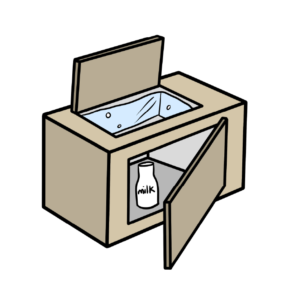
Lighting
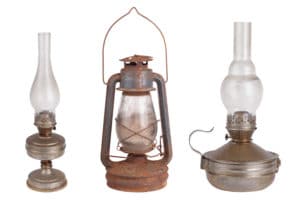
Lamps that burned a fuel called kerosene were common. These gave off dirty smoke. You had to clean the lamps often, and add more kerosene.
Warm Baths
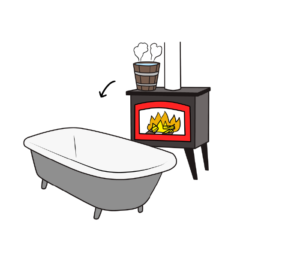
The bath was moved into the kitchen to be close to the stove. Hot water was heated on the stove. Filling the tub took time, and heating water used up fuel. An entire family often took turns using the same bath water.
Laundry
Clothes were washed in soapy water and rubbed against a washboard to get them clean. The clothes were then rinsed in clean water. People did not do laundry on a rainy day because clothing had to hang outside to dry.
Ironing the wrinkles out of clothes was not much fun. The iron was made of solid iron. It was very heavy. The iron was heated on the stove. A rag or potholder was used on the very hot handle. The iron had to be reheated frequently on the stove.
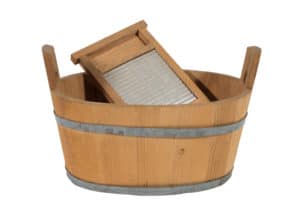
Communication
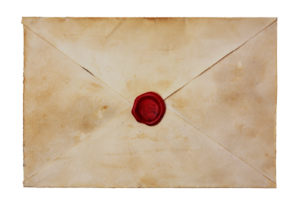
There were no telephones or Internet. Messages were delivered by a person walking or riding a horse. Letters took days and sometimes weeks to reach their destination.
To learn more about life without electricity, watch the video by Trajnostna energija on YouTube.
Show What You Know!
Complete some questions about the reading selection by clicking “Begin Questions” below.









